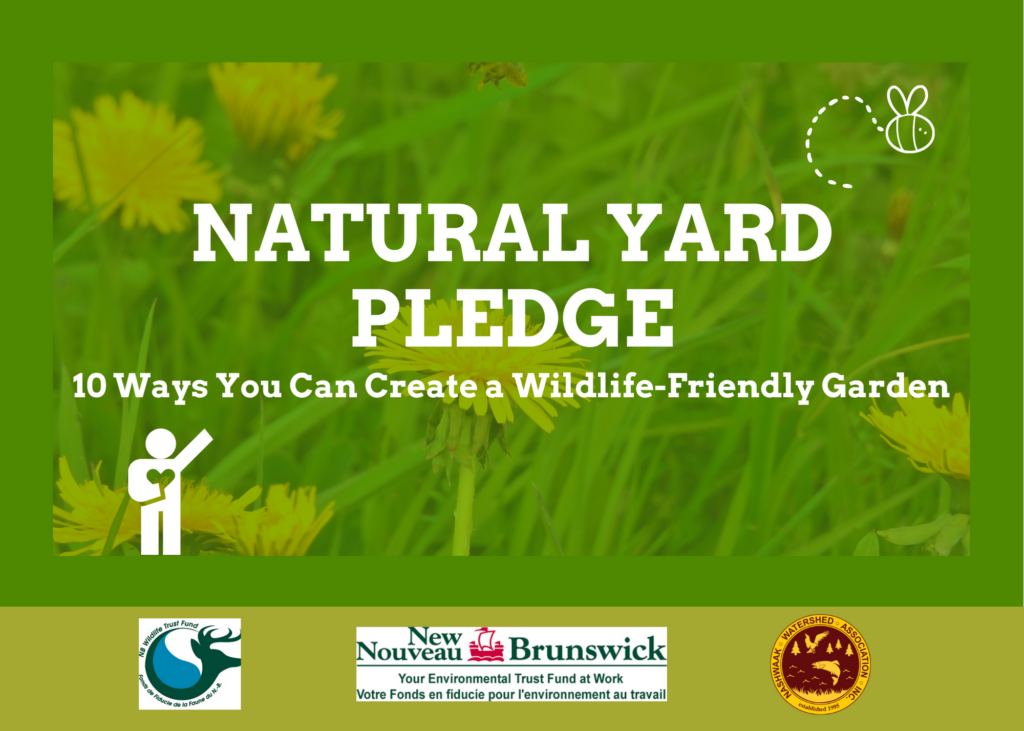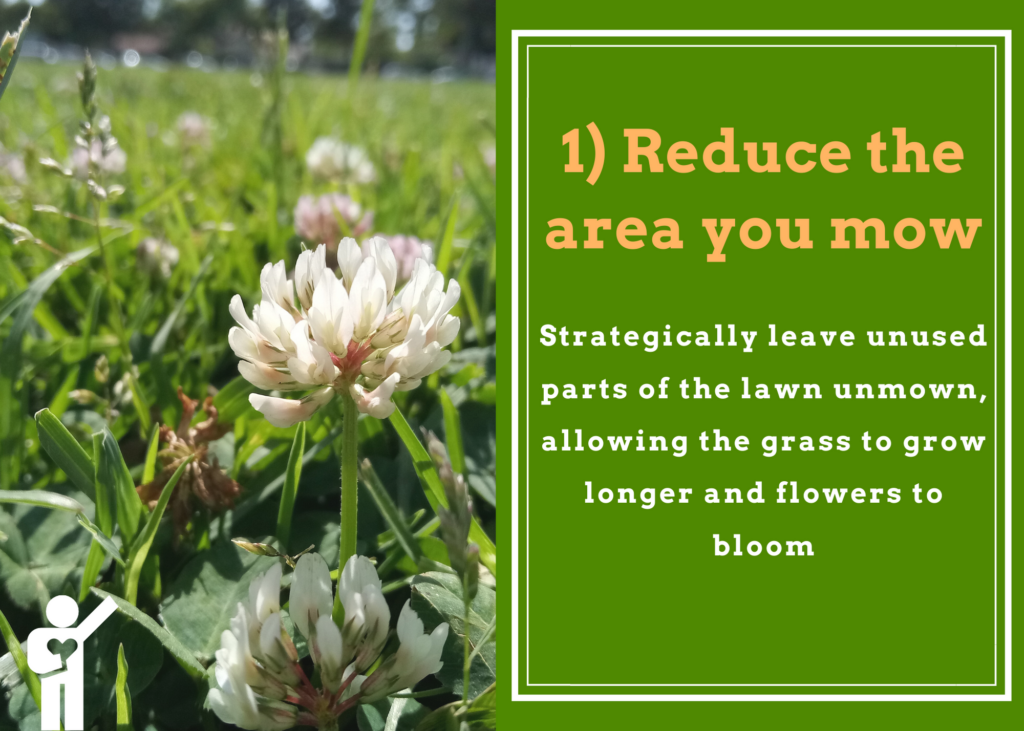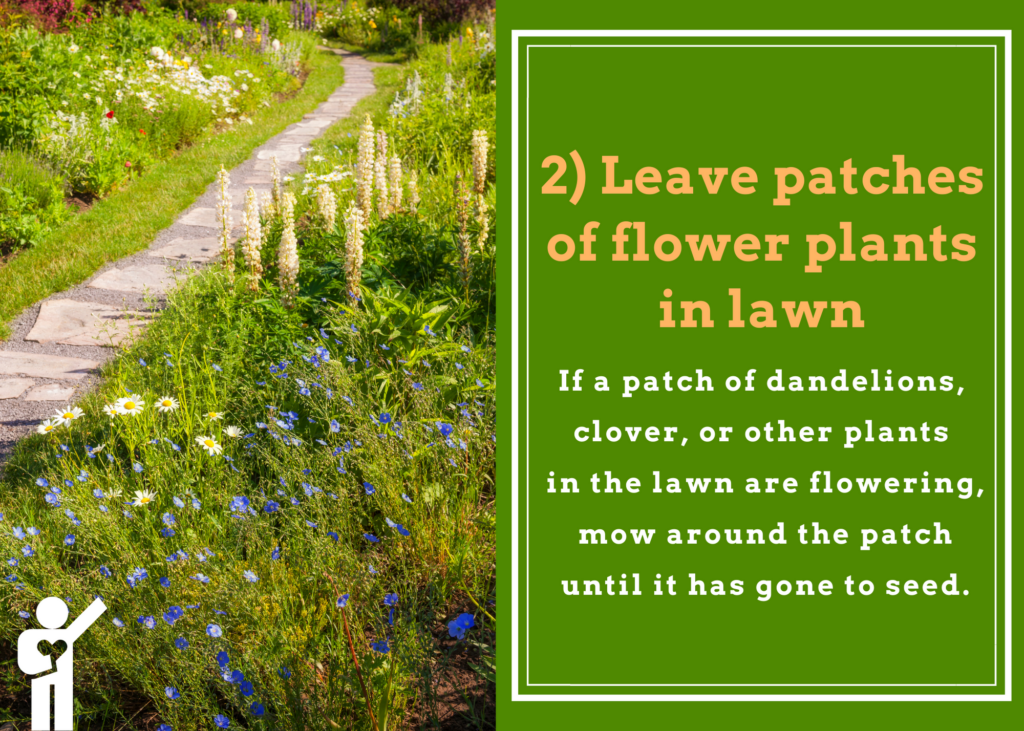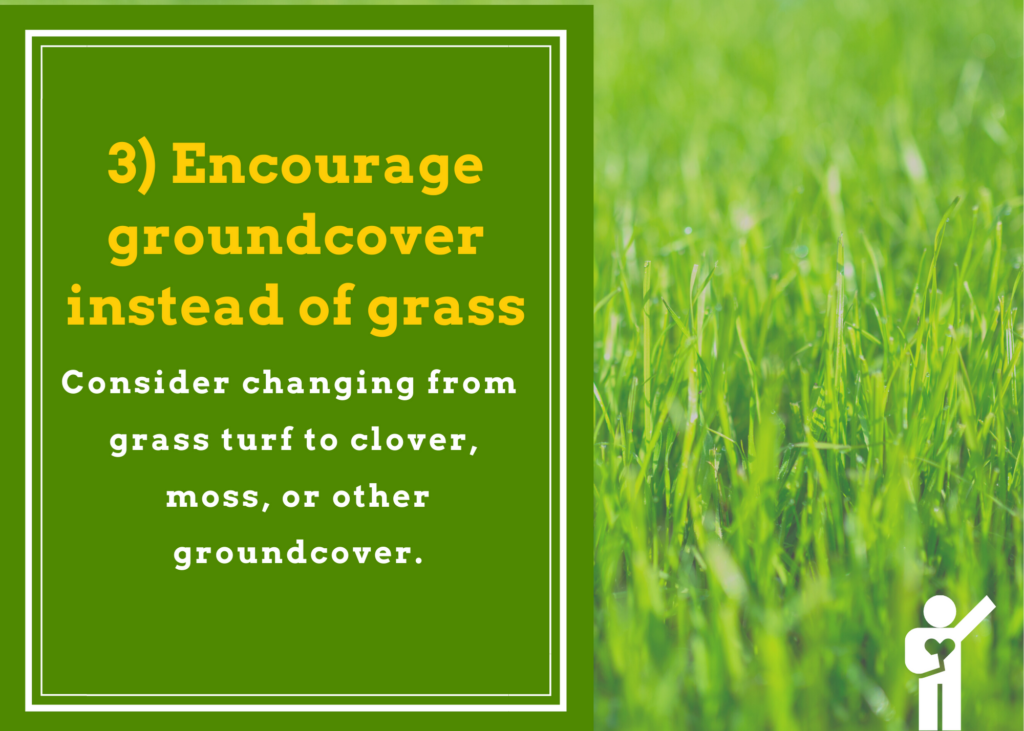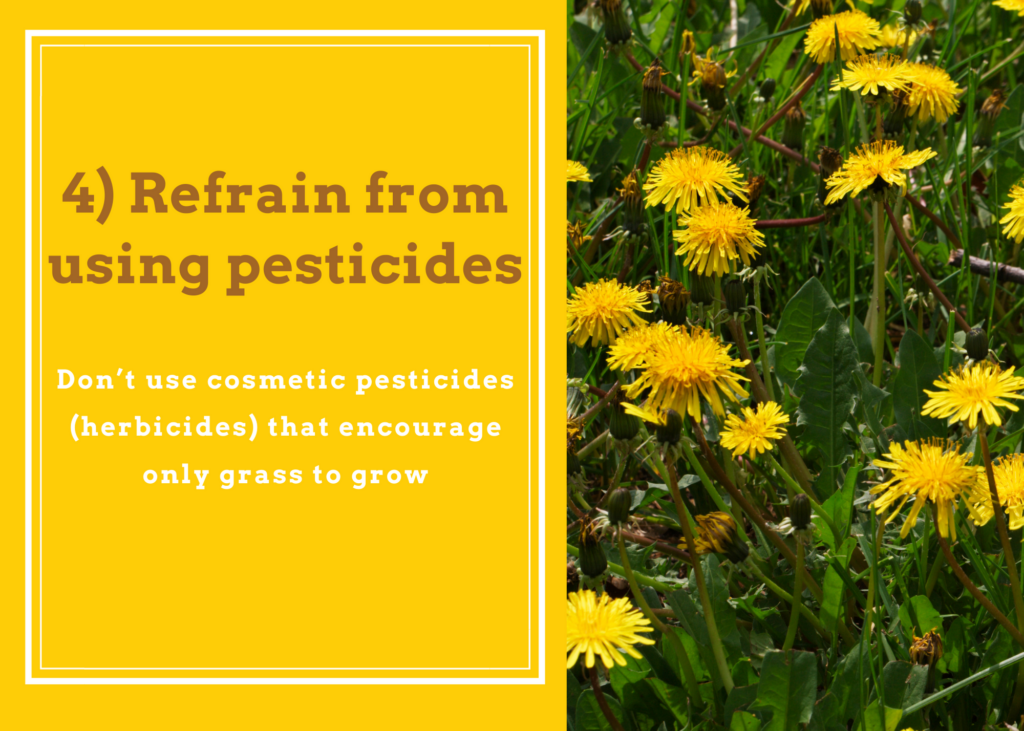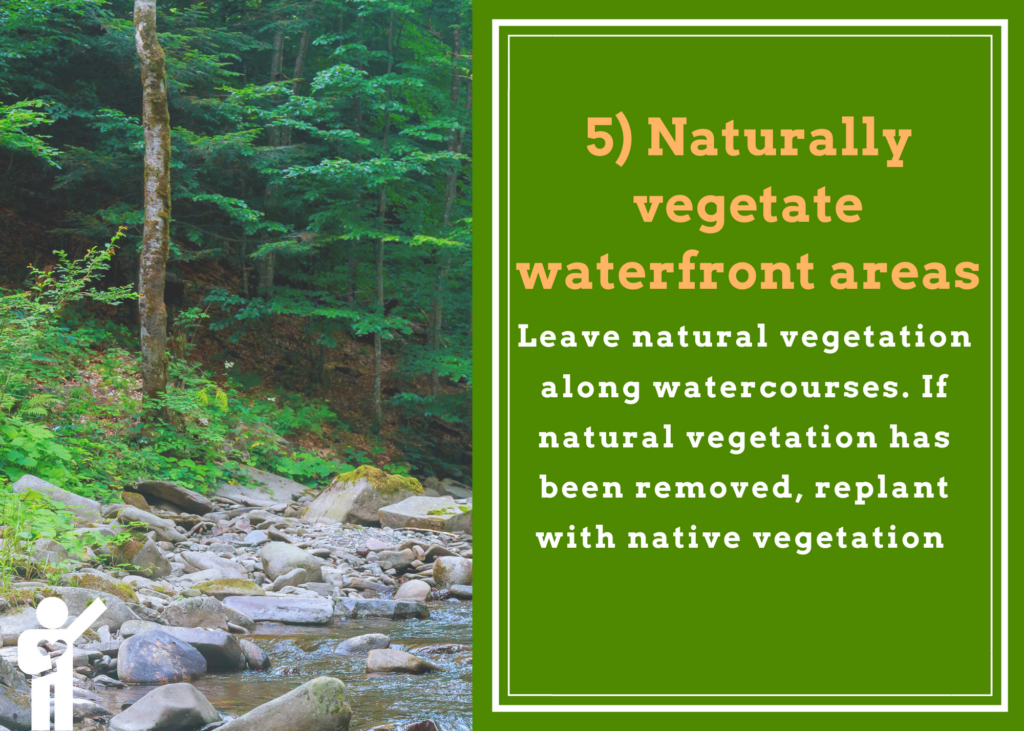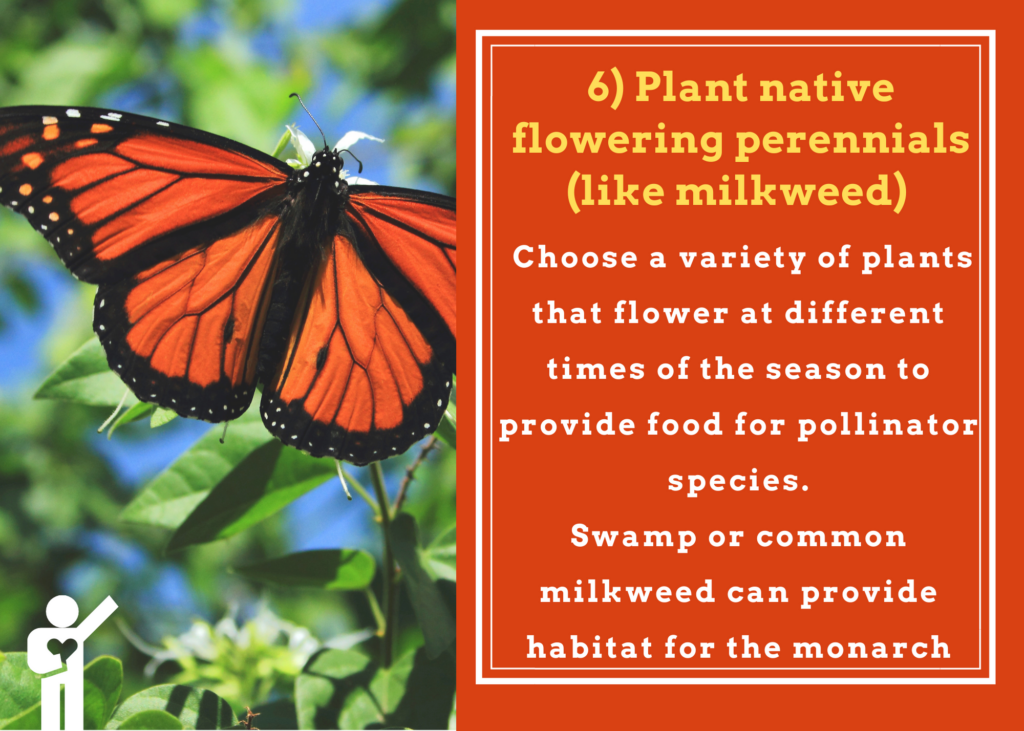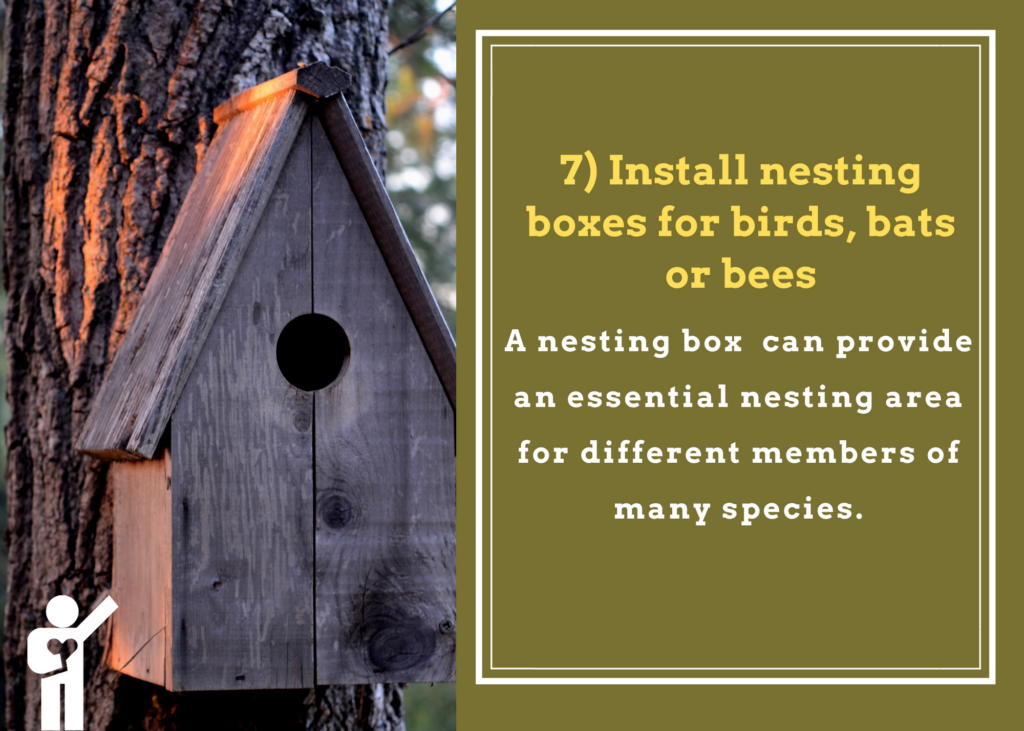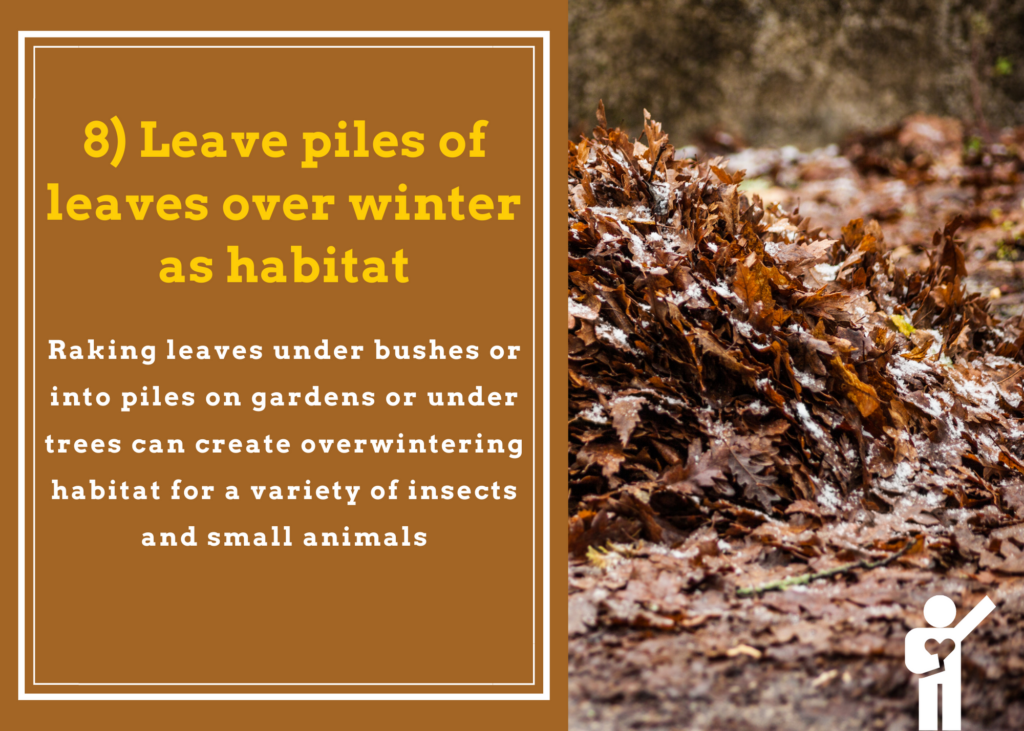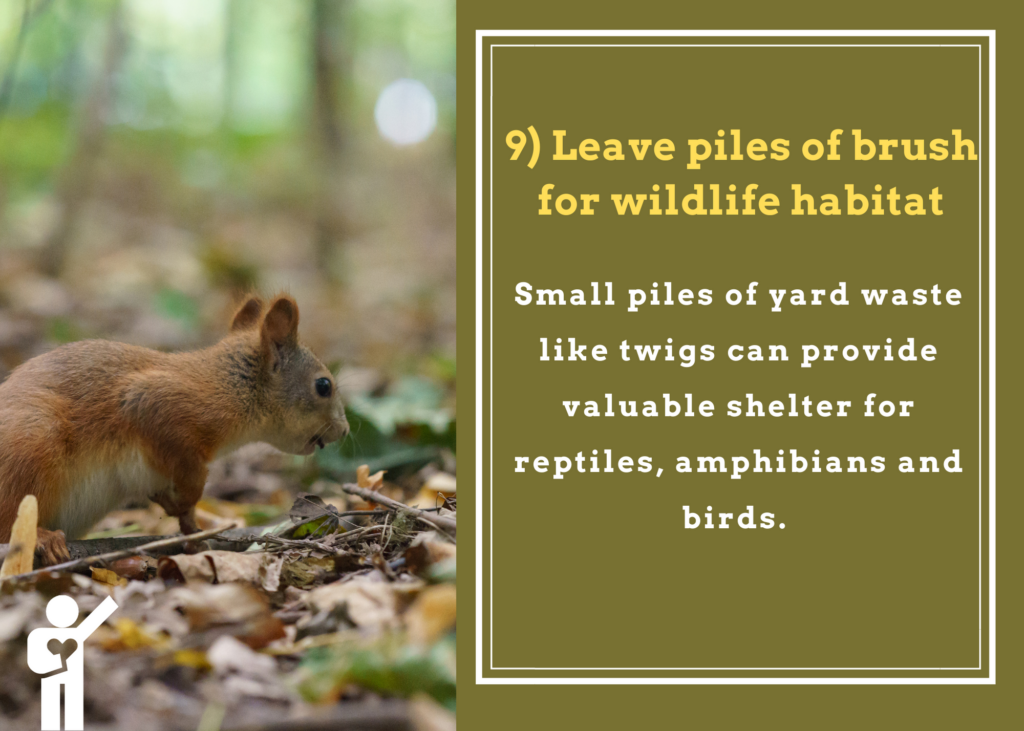Nashwaak Watershed Association
Natural Yard Pledge & Wildlife Friendly Gardening
what is a natural yard?
A natural yard is a garden that is managed to support wildlife, clean water and healthy people. Natural yards reduce the area of mown grass, prioritize native species, and can require much less maintenance than manicured lawns.
why choose a natural yard?
The science is out: conventional landscape practices, such as manicured lawns, have many unintended negative consequences for biodiversity, by degrading and fragmenting habitat for native organisms. In the eyes of birds, bees and butterflies, our yards are ecologically barren, devoid of valuable habitat. As a result, these animals are pushed to travel ever greater distances to find food and shelter, and their populations are now in critical decline. When we plant our yards with non-native vegetation, we disrupt the delicate dependent relationships between native plants and wildlife, which have evolved together over millennia, and support healthy ecosystems and all life. Many traditional lawn care practices also use significant amounts of fuel, further contributing to climate change.
We are encouraging landowners to embrace a cultural shift regarding our urban landscapes – to change who we garden for and why.
How can I participate?
Take the pledge to support a natural yard and become the steward of your own urban landscape by committing to at least 3 of our 10 simple actions below and we’ll send you a sign for your yard!
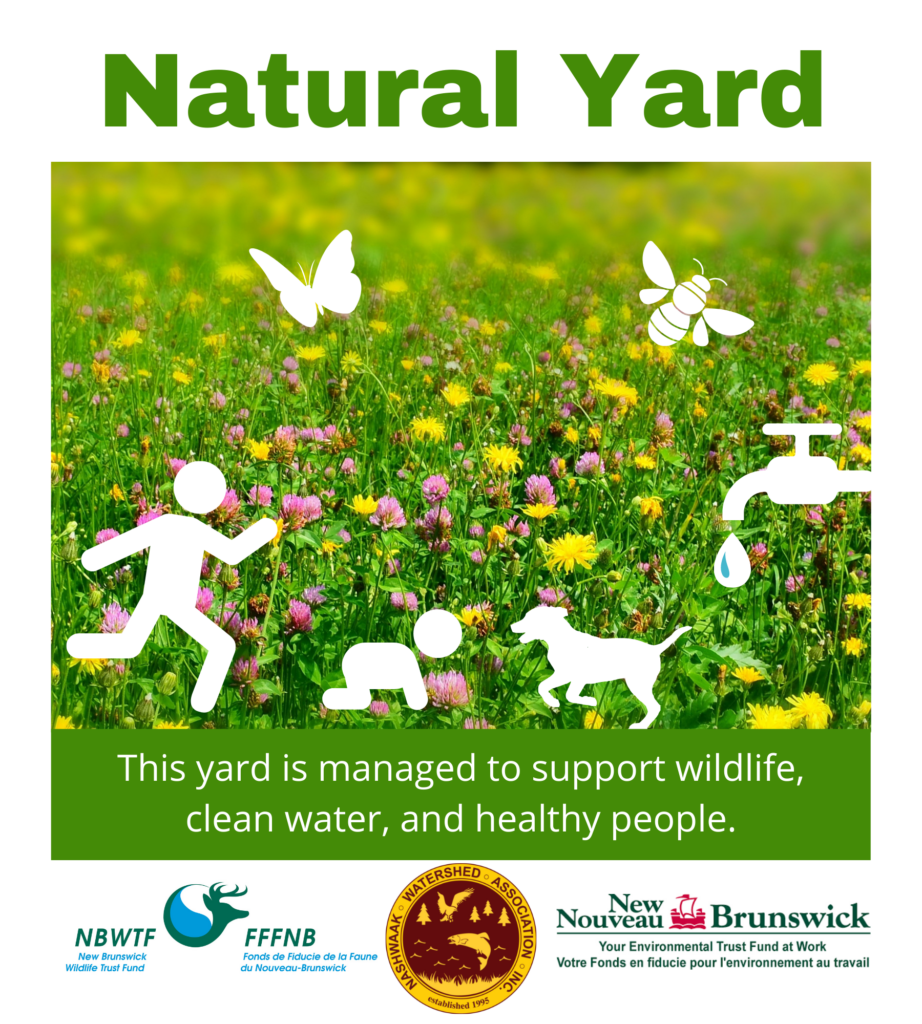
The Natural Yard Pledge
With just 10 simple actions you can naturalize and create a more wildlife-friendly yard to support greater native biodiversity.
- Reduce your mowing.
- Leave patches of flowers in the lawn until they finish blooming
- Encourage groundcovers instead of grass.
- Refrain from using pesticides.
- Naturally vegetate waterfront areas.
- Plant native flowering perennials (e.g. milkweed to host monarch butterflies).
- Install nesting boxes for bats, bees, or birds.
- Leave piles of leaves over winter as a habitat.
- Leave piles of brush for wildlife habitat.
- Plant additional native trees and shrubs.
Further Details
Check out the tabs below for more details on building your Natural Yard!
1. Reducing the Area You Mow
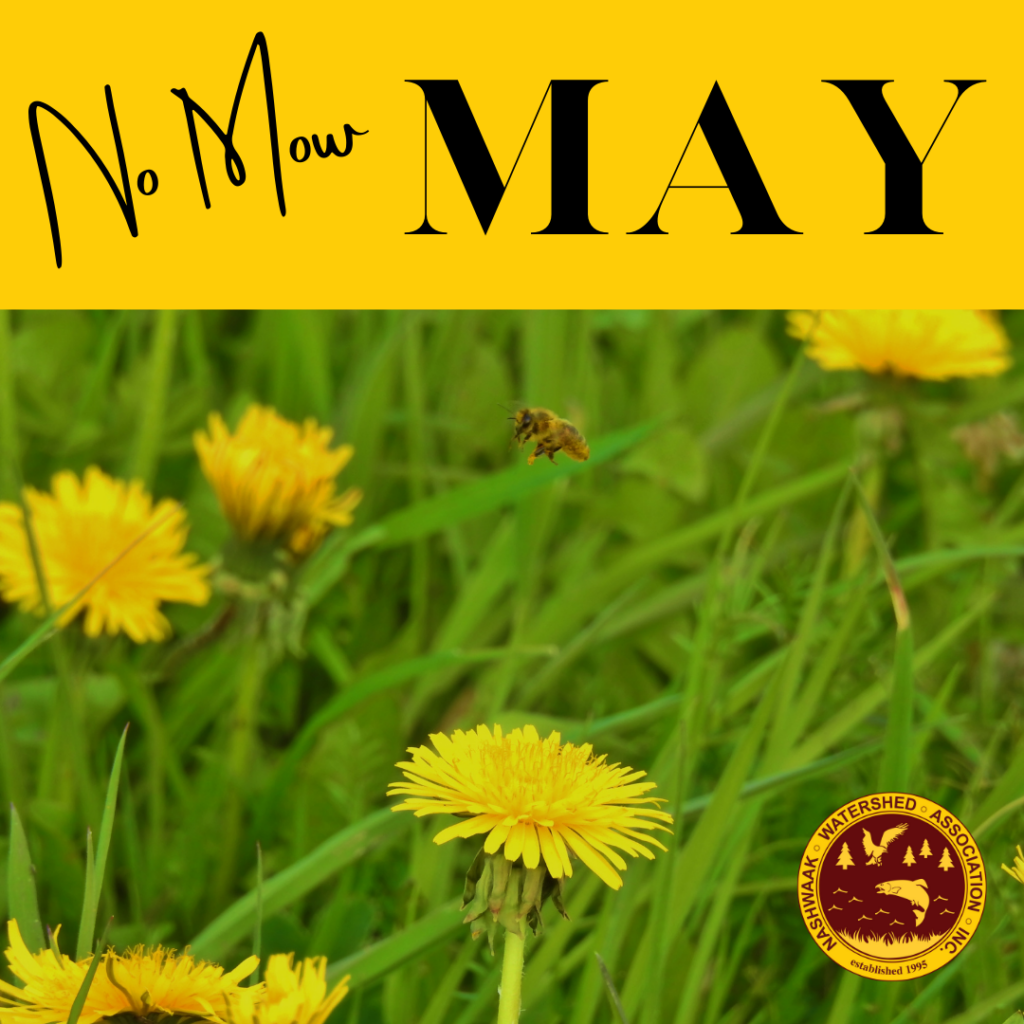
Reducing the area you mow not only gives your lawn mower a break, but also promotes shelter and food for wildlife. Leaving parts of your lawn unmown will allow the grass to grow longer and the native flowers to bloom, attracting desirable pollinators such as bees, and can help them survive by providing food and shelter. This is particularly important in early spring, when pollinators are emerging and there are fewer plants in flower to provide food. You could designate certain areas of the yard as no mow zones, such as under trees, around edges, or behind your house.
Participating in annual events such as No Mow May allows dandelions and other early flowering plants to grow freely and provide bees and other important pollinators with a much-needed early nectar source.
2. Leave Patches of Flowering Plants in Your Lawn
Sometimes doing nothing is the best remedy. Consider leaving or cultivating patches of flowering plants that arise naturally within your yard. You might be surprised at the diversity of flowers that are already growing. Once the patch has finished flowering, you can return to mowing it or leave it as a no mow zone. Flowers such as milkweed, dandelions, aster, golden rod and dog violets not only help pollinators, but they also help to aerate the soil, improving its quality.


3. Encourage Groundcover Instead of Grass
Changing your dominant groundcover from turf grass can have many benefits in terms of supporting a greater diversity of wildlife, improving soil quality, and building resilience to both flooding and drought. Consider switching it up and trying out other groundcover plants such as clover, moss, low-lying shrubs or other flowering plants to suit the different sites in your yard. Alternative varieties of groundcover can often survive with much less water, herbicide, and require no mowing, therefore reducing your impact on the environment.
Are you having a hard time growing your seeded grass? Tired of watering, or mowing? Alternative yards require much less maintenance and have many environmental benefits.
Moss yards
Moss is a great alternative to turf if you have a wetter or shadier site in your yard with average to poor soil. Moss will also grow readily beneath softwoods, such as balsam fir, spruce and pine trees, whose needles (if not raked up regularly) will inhibit the growth of grass. Rather than seeding grass beneath these trees, let the moss take over naturally. Its presence as groundcover can benefit insects, salamanders and frogs that like to live in moss colonies.
Additional benefits to a moss yard:
- No chemicals: Moss will not require soil supplements to encourage growth.
- Flood mitigation: Mosses are natural sponges, holding up to 30 times their weight in water. As a result they can aid with stormwater and erosion control by absorbing and slowing down surface runoff and retaining soil.
- Carbon sequestration: Mosses play a significant environmental role in the global carbon cycle as the largest terrestrial repository for carbon on the planet.
Click here for a resource to help determine if a moss garden is right for you. Consider the various moss species that might be appropriate by clicking here. Note: always research a species and ensure it is native to your region before selecting it.
Clover Yards
Some landowners may consider clover a weed that serves only to disrupt the monoculture of grass turf in their yards. However, like dandelions, clover is abundant and has flowers that are a great food source for pollinator species. Similar to grass, clover is soft on the feet and nice to wriggle your toes in. It is more drought hardy than grass and able to stay green all summer with minimal watering. Additionally, it can outcompete weeds more readily than grass, requiring less herbicides to maintain your lawn.
Clover does not grow tall, and needs no mowing to keep it in check. However, as a short-lived perennial, it may require re-seeding every few years.
Due to its symbiotic relationship with soil bacteria, clover is a nitrogen-fixing plant, able to sequester nitrogen from the atmosphere and store it in the soil. This improves soil quality and negates the need for additional fertilizer.

Flower or shrub-filled yard
Flowers and shrubs can also take the place of a lawn. Choose native perennials, which require less attention and fertilizer to maximize the low-maintenance factor. Front yards that are exposed to full sun, and adjacent to roadsides can present harsh conditions for plants – such sites typically have drier, nutrient-poor soil, larger exposure to pollutants and possibly a high clay content. One benefit to choosing alternative groundcovers such as flowering plants is that their extensive root systems can amend that soil over time. The trick is to choose hardy plants, capable of withstanding harsher weather conditions, and pollutants such as road salt. Flower and shrub species not only beautify your space, but also can provide a source of nectar for pollinator species.
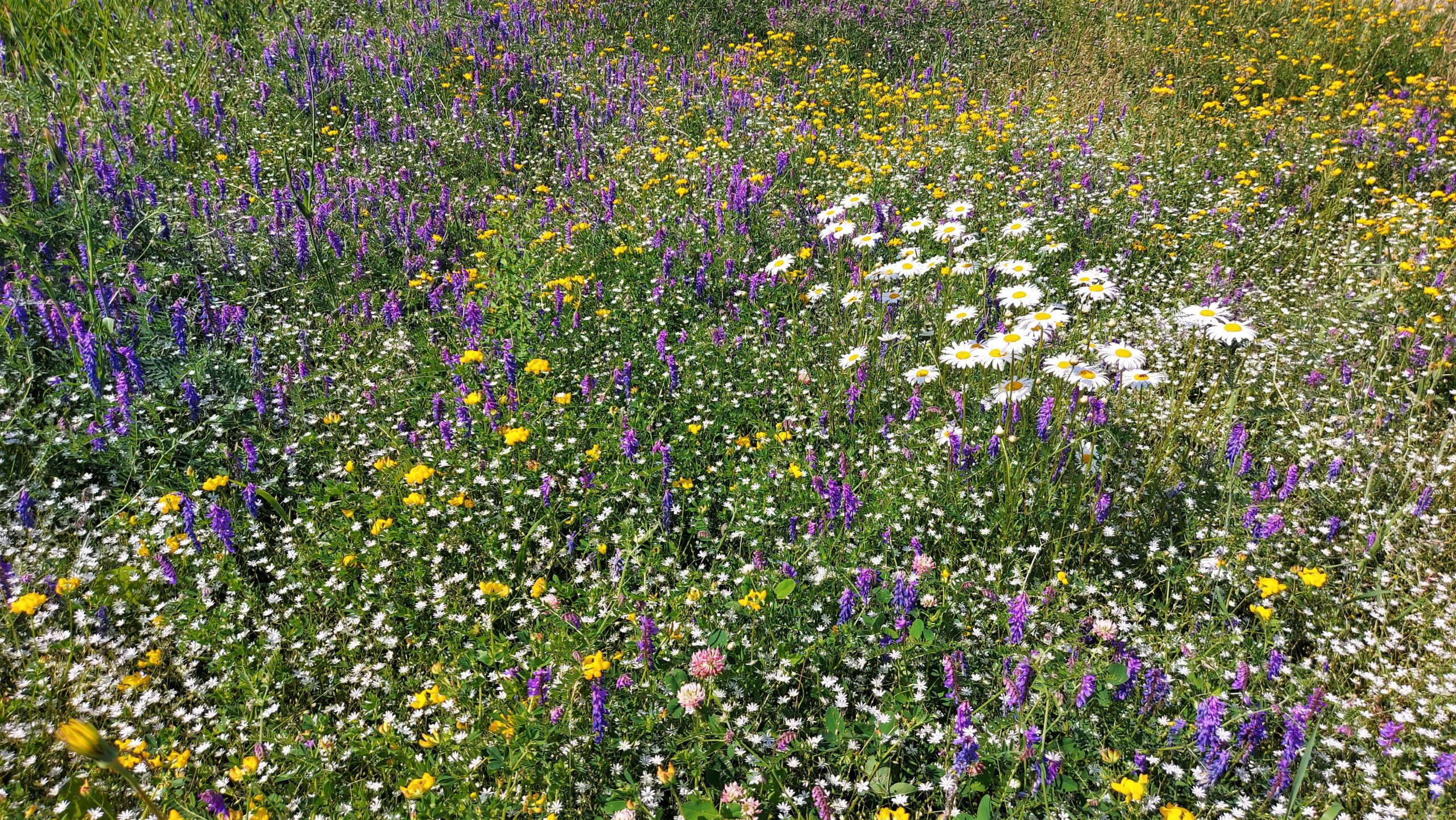
The Province of New Brunswick’s has a comprehensive suggestion list for low growing perennials to help you choose the right plants for your yard. Our provincial plant the Violet (Viola spp.) is on that list too! A beautiful option to consider. There’s a good chance it’s already be growing in your lawn.
For more types of appropriate vegetation you might consider, the Province has a comprehensive set of resources.
Check out some more options here, and do your research to ensure your plant choice is within your regional hardiness zone (Natural Yard Tip # 6 for more details).

4. Refrain from Using Pesticides
There are many reasons to not spray your lawn. Even though chemicals can reduce the weeds within your yard, they do so much more harm than good.
The benefit of planting native vegetation in your lawn is a reduced need for pesticides or herbicides that encourage only grass to grow. While you may still end up with a few “weeds,” pesticides can be avoided by using natural methods for weed removal such as pulling them by hand or spraying them with a vinegar-water mixture.
Reasons to reconsider the use of pesticides:
- The consistent use of pesticides can lead to toxins entering rivers and streams through water run-off. They can even enter groundwater wells below your home.
- Pesticides are known to cause harm to domestic animals and children who play on treated grass.
- These chemicals reduce biodiversity, which is essential to a healthy ecosystem.
5. Naturally Vegetate Waterfront Areas
This tip is very important for waterfront property owners within the watershed. If you have any native vegetation occurring along the watercourse running through your property, it is important to let it grow. If natural vegetation has been removed, you can replant with native vegetation such as silver maple, willow or dogwood. This vegetation is very important as it not only provides habitat for many species but can also prevent erosion along the river or streambanks. Native plants can even help to reduce damage from floodwaters and improve water quality.
What is a riparian buffer?
Riparian buffers comprise the natural vegetation that extends from the edge of the stream bank by the river or watercourse, up and over its banks and onto the adjacent upland terrace or floodplain. Such buffers provide a variety of ecological goods and services and are the most effective way to protect and conserve our waterways. A robust riparian zone is a direct indicator of the healthy condition of the stream.
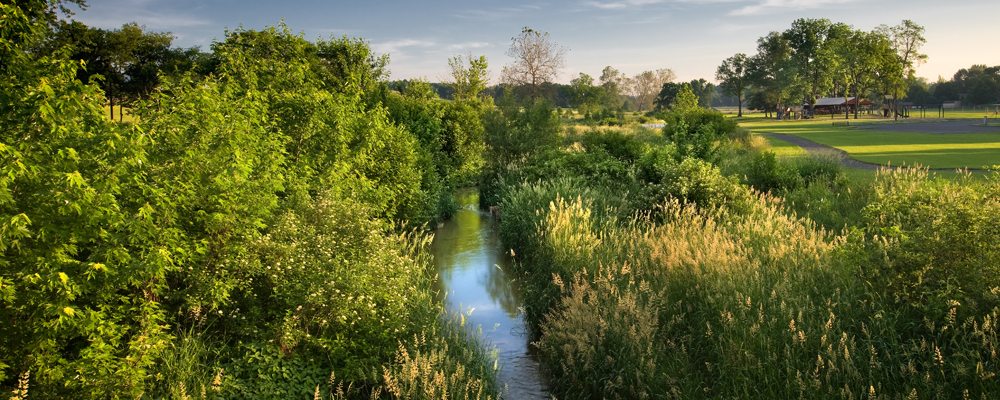
What services do buffers provide?
Did you know riparian buffers host 90 % of aquatic and terrestrial life during a stage in their lifecycles, and that these areas are up to twice as biodiverse than upland forests? There are many other important reasons why these buffer zones are essential:
- Water quality – Buffers reduce pollution by absorbing and filtering animal wastes, sediments, nutrients and pesticides from urban areas, crop- and rangelands. They also shade our waterways, lowering the water temperature and providing thermal refugia for cold water aquatic species, such as Atlantic salmon and brook trout.
- Erosion and flood control – Riparian buffers are a valuable, nature-based solution to flood and erosion mitigation. The deep-rooted, water tolerant vegetation in buffers, protects and holds riverbank soils in in place, and the flexible nature of the vegetation helps to dissipate the erosive energy of the river. By maintaining connectivity between rivers and their floodplains, buffers can slow and reduce the severity of overland flooding.
- Wildlife habitat – Healthy riparian areas are hotspots for native biodiversity. These areas are located at the transition between land and water, and as such contain a variety of vegetation, and site conditions that allow them to host up to 90 % of terrestrial and aquatic species at some stage in their life cycles.
Through our Natural Edge Program, we have partnered with numerous waterfront landowners in the watershed and planted thousands of native plants to restore our riparian areas.
Other resources on natural edge can be found here.

6. Plant Native Flowering Perennials
Planting native flowering plants in your garden beds is beneficial in many ways. Firstly, flowering plants are great for pollinator species, such as bees, butterflies, and birds.
Secondly, native plants are generally more adapted to local climate conditions and are less likely to succumb to pests. Some perennials plants that could be planted include joe pye weed, black-eyed susan, coneflower, bee balm, butterfly weed, New England aster, and swamp or common milkweed.
Check out your regional hardiness zone to know what plants work best for where you live. This helps you decide which plants well adapted to your climatic condition.
A staff favorite native flowering perennial is the goldenrod. Goldenrod (Solidago) is a beautiful herbaceous native plant that flowers late in the season, providing nectar to many pollinator species. To learn more about these species click here!
Have you ever heard of milkweed?
Milkweed is the only plant that provides food for the caterpillar of the monarch butterfly. That is why the monarch butterfly is sometimes known as the “milkweed butterfly.” Monarch butterflies lay their eggs on milkweed, and once they have hatched, the juvenile caterpillars feed on milkweed leaves. Planting either swamp or common milkweed, the two native species in New Brunswick, helps to provide this butterfly with much-needed habitat. Swamp milkweed is often preferable in a garden setting because it does not spread throughout the site. It requires moist soil to become established, so watering it throughout the first few years is recommended.
Every fall, monarchs set out on a 4,000-to-5,000 kilometer journey from Southern Canada to their wintering sites in the mountain forests of central Mexico. This is one of the longest insect migrations in the world!
Unfortunately, this beautiful and resilient species is threatened by habitat loss. Disruptions to their migration are caused by climate change, and by the loss of native plants (including milkweed species) along their migratory corridors. Deforestation of their overwintering sites also threatens this species. Read more about monarchs and their journey to New Brunswick.
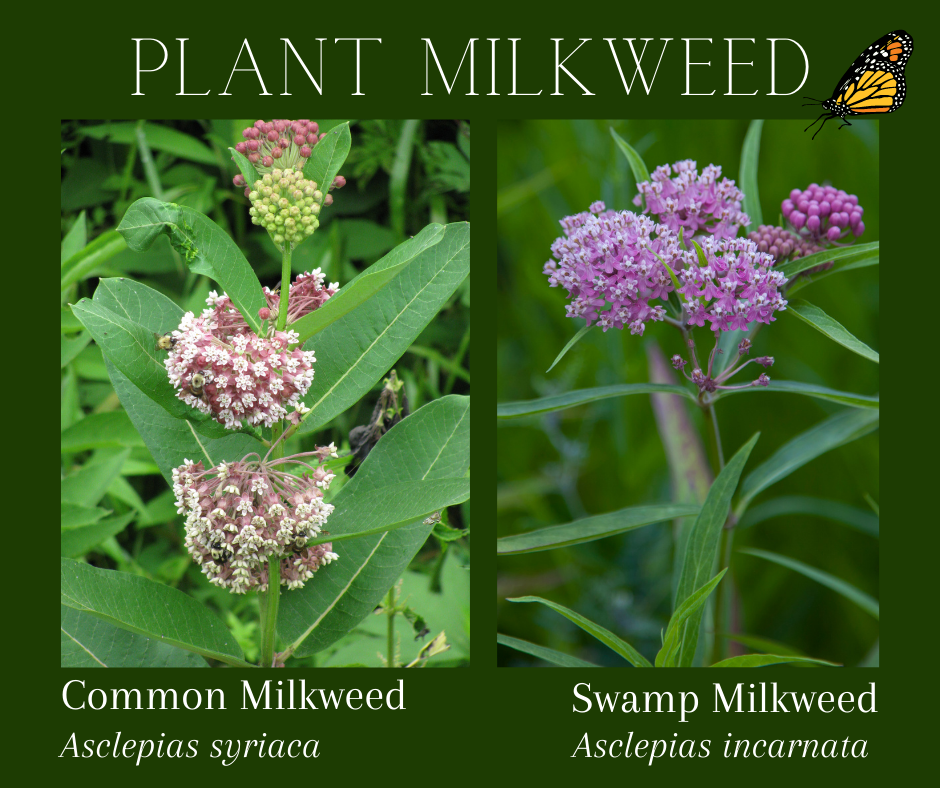
Another way of adding flowering perennials to your yard is to create a rain garden. This can help reduce localized flooding and filter surface run-off that would otherwise drain directly into waterways, protecting and improving local water quality. Read our brochure for more details.


7. Install Nesting Boxes for Bats, Bees, or Birds
A nest box is an enclosure that can be built especially for animals to roost, nest or shelter in. Nest boxes can mimic natural hollows that are found in older trees and provides wildlife with a safe and comfortable place to rest and raise their young.
Natural tree hollows are becoming more difficult to come by in many areas – most trees don’t start to form hollows until they are at least 80 years old. As older trees are becoming more rare, nest boxes can create valuable habitat for those species that are dependent on hollows in trees for their habitat.
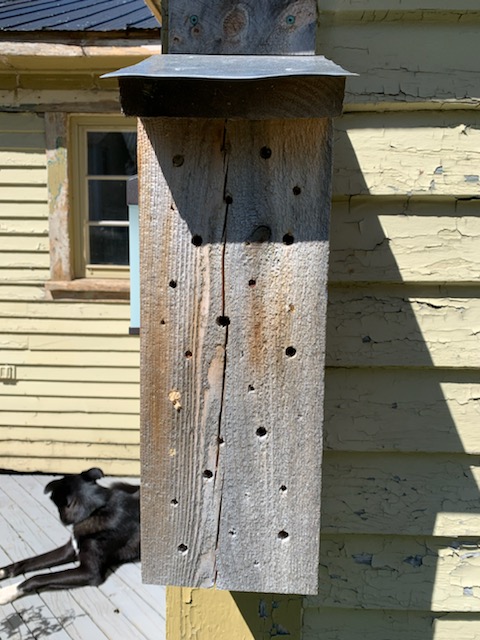
Wooden bee hotels are a great way to host solitary bees in style as they hibernate over winter. For a detailed diagram, check out our additional resources below.
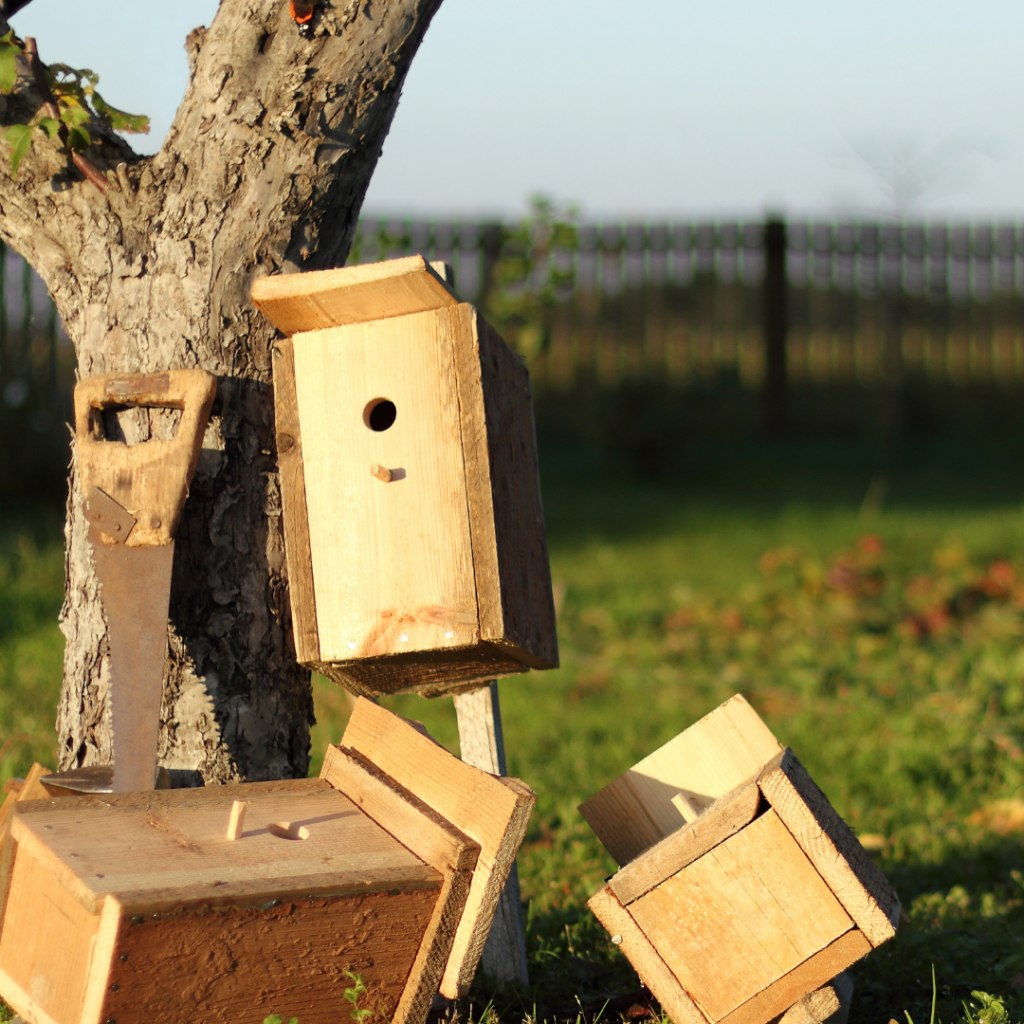
Duck nesting cavities are important, as some species rely on tree cavities for habitat. Learn more about duck nest boxes, including how to build one, here.
8. Leave Piles of Leaves Over Winter as Habitat
Landowners in New Brunswick are conditioned to “clean up” the leaves in our yards before the onset of winter. However, those leaves can provide perfect overwinter habitat for a large variety of insects and small animals such as butterflies, moths, and even salamanders! Try leaving a few piles strategically around the edges of your yard, or under some trees and bushes for the winter.

9. Leave Piles of Brush for Wildlife Habitat
As you clean up your yard in the spring or fall, consider leaving small piles of yard waste such like twigs in strategic locations around your property, e.g. beneath some bushes or trees, where it will be out of your way. Brush piles provide valuable shelter for reptiles, amphibians, and birds. Depending on where you live, it could be important to consider the views of your neighbours in locating a spot for brush piles.
The Canadian Wildlife Federation has a great blog post with suggestions on how to build the ideal brush pile.
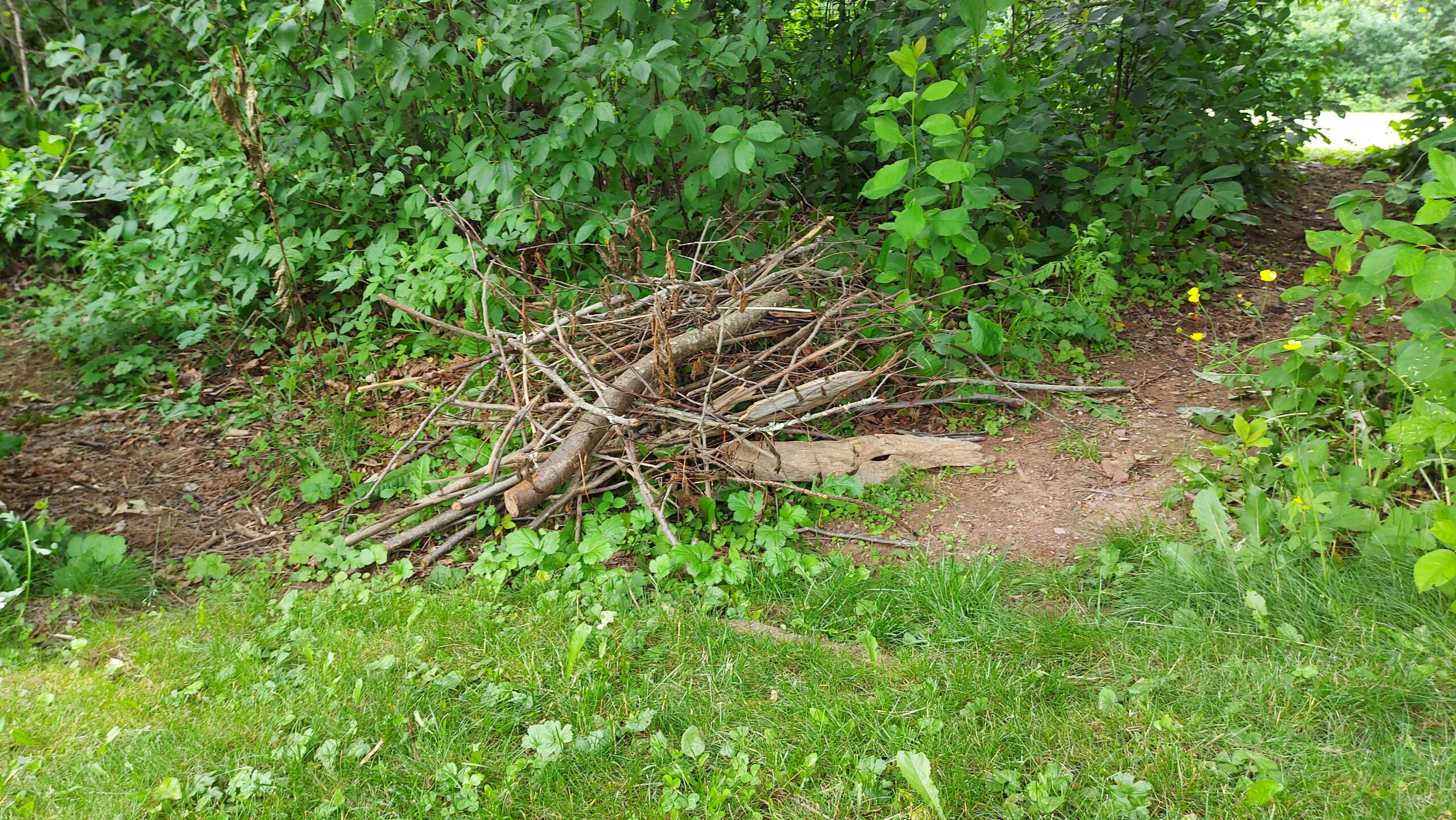
10. Plant More Native Trees
This next tip is a simple one – plant more trees!
Any tree on your property will provide valuable services, including shade, habitat and carbon sequestration. Planting new trees on your property before the mature trees die can help the continuity of these services. Choosing tree species that are native to this region is also important – they will better serve the wildlife on your property and will be better suited to our regional and changing climate. A few examples of native tree species in New Brunswick include black cherry, red maple, hemlock, white pine, and red oak.
The Fundy Biosphere Reserve Planting Guide is a great resource for determining which tree species are best suited for your region.
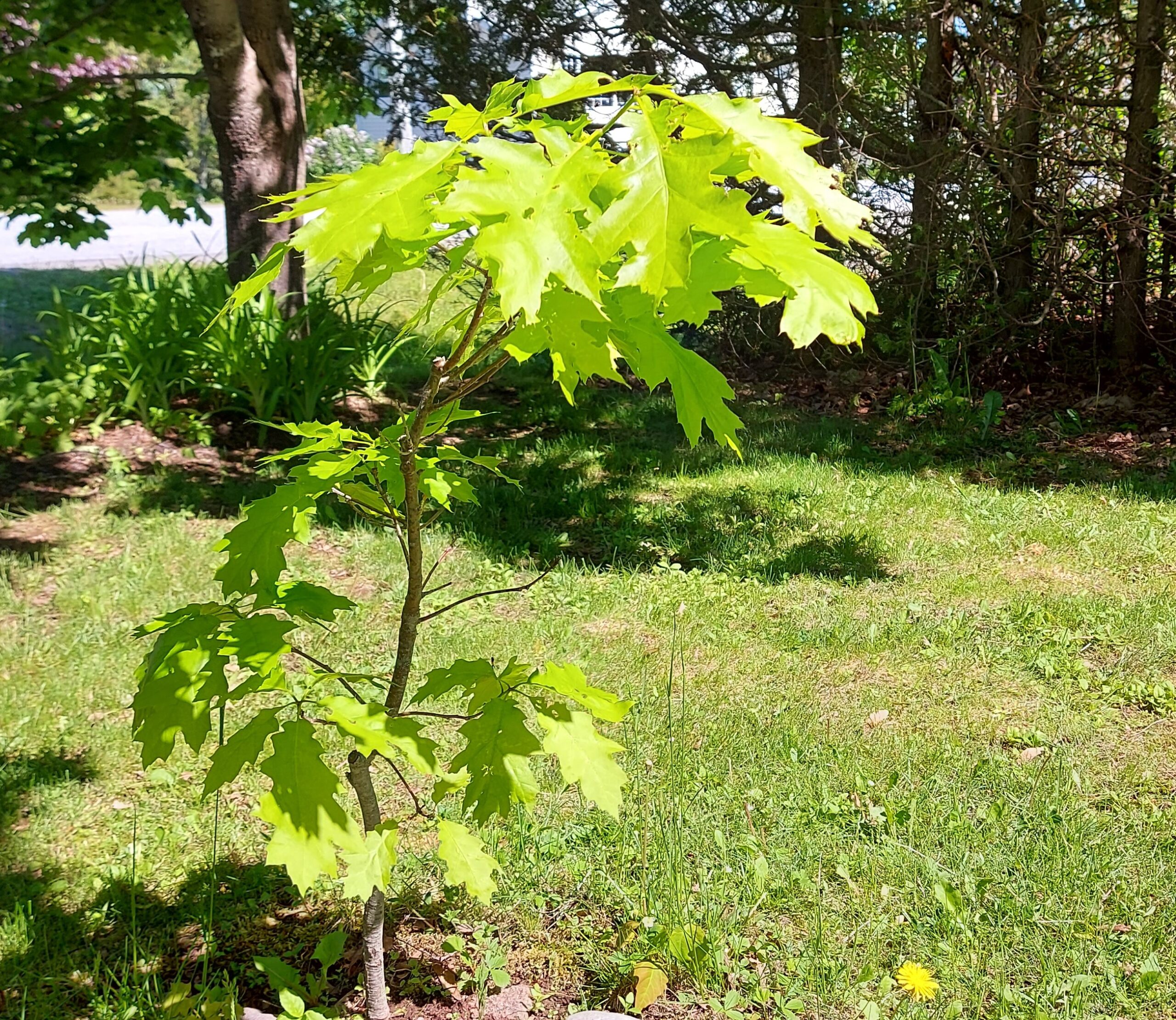
In addition to planting new trees, consider leaving dead or dying trees standing (if it is safe to do so). This will provide a source of food and shelter for birds that require cavities for roosting (sleeping) and nesting. It will also provide a source of food for many birds by providing habitat for a range of insects.
Our provincial bird, the black capped chickadee, does not migrate south for the winter. Dead trees provide great nesting sites and food sources for these tough little birds.

Build Your Own Rain Garden
Rain gardens are designed to collect rainwater run-off, slow its movement, allowing it to filter back into the ground conducting it back into the water table.
When planted with native vegetation, rain gardens are pollinator friendly, can help reduce localized flooding, and filter surface run-off that would otherwise drain directly into our river protecting and improving local water quality.
The NB Media Co-op has some more in-depth background information on rain gardens and tips on how you can get started.
We are working to support local landowners who want to build their own rain gardens. If you are a local landowner or business in the watershed with publicly accessible lawn and are looking to build a rain garden, that might serve to educate the public on their value, please contact us.
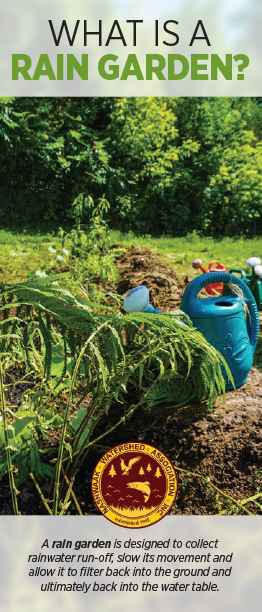
Additional Resources
Watch this natural yard webinar, presented by Nature NB’s Becca Sharp, to learn more about designing and planning your natural yard, as well innovative tips for creating habitat for birds, bees and butterflies
songbird nest box
Installing a bird box encourages a bird to nest in an area and creates habitat for local songbirds and ducks.
bee hotel
Wooden bee hotels are a great way to host solitary bees in style as they hibernate over winter.

